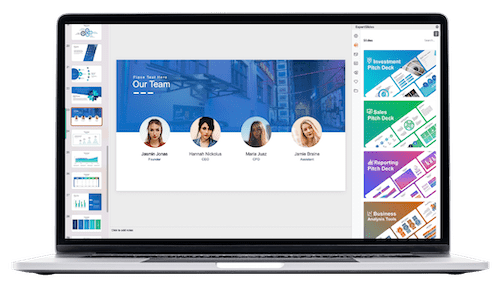Business English Presentation – Tips and Tricks for Success
Table of Contents
When it comes to delivering a successful business English presentation, one of the most important factors to consider is understanding your audience. Before you even begin to prepare your presentation, take the time to research and understand who will be in attendance. Consider their level of knowledge on the topic, their expectations, and their potential concerns or objections.
This will allow you to tailor your presentation to meet the specific needs and interests of your audience, making it more engaging and impactful. In addition to researching your audience, it’s also important to consider cultural differences and language barriers that may exist. If you are presenting to an international audience, be mindful of cultural norms and customs that may impact how your message is received.
Additionally, if English is not the first language of your audience, be sure to use clear and simple language, avoid idioms and slang, and speak at a moderate pace to ensure understanding. By taking the time to understand your audience and adapt your presentation accordingly, you can increase the likelihood of delivering a successful and effective business English presentation. Understanding the audience is crucial when it comes to delivering a successful business English presentation.
It is important to research and analyze the demographics, interests, and expectations of the audience before preparing the presentation. By doing so, you can tailor your content to meet the specific needs and interests of your audience, making it more engaging and impactful. Additionally, it is important to consider cultural differences and language barriers that may exist, especially when presenting to an international audience.
By being mindful of cultural norms and customs, as well as using clear and simple language, you can ensure that your message is received and understood effectively. Taking the time to understand your audience and adapt your presentation accordingly can significantly increase the likelihood of delivering a successful and effective business English presentation.
Key Takeaways
- Understand your audience’s needs and expectations to tailor your presentation effectively
- Structure your presentation with a clear introduction, main points, and conclusion for easy comprehension
- Use visual aids sparingly and effectively to enhance your message
- Engage your audience through interactive elements and storytelling to maintain their interest
- Deliver your presentation with confidence, professionalism, and a clear speaking voice
Structuring Your Presentation

Once you have a clear understanding of your audience, the next step in delivering a successful business English presentation is to structure your content in a clear and logical manner. A well-structured presentation will not only help you stay organized and on track, but it will also make it easier for your audience to follow along and understand your key points. Start by outlining the main objectives of your presentation and identifying the key messages you want to convey.
Then, organize your content into a logical sequence, using headings and subheadings to break up the information and make it easier to digest. In addition to structuring your content, it’s also important to consider the overall flow of your presentation. Begin with a strong opening that captures the attention of your audience and clearly outlines what they can expect from the presentation.
Then, move on to the main body of your presentation, where you will delve into the key points and supporting evidence. Finally, conclude with a strong closing that summarizes the main takeaways and leaves a lasting impression on your audience. By structuring your presentation in a clear and logical manner, you can ensure that your message is effectively communicated and easily understood by your audience.
Structuring your presentation is a crucial step in delivering a successful business English presentation. It is important to outline the main objectives and key messages of your presentation, and organize your content in a logical sequence using headings and subheadings. This will not only help you stay organized and on track, but it will also make it easier for your audience to follow along and understand your key points.
In addition to structuring your content, it’s also important to consider the overall flow of your presentation. A strong opening that captures the attention of your audience, a well-developed main body that delves into key points and supporting evidence, and a strong closing that summarizes main takeaways are all essential components of a well-structured presentation. By taking the time to structure your presentation in a clear and logical manner, you can ensure that your message is effectively communicated and easily understood by your audience.
Using Visual Aids Effectively
In today’s digital age, visual aids have become an essential component of any business English presentation. When used effectively, visual aids can help to reinforce key points, enhance understanding, and keep your audience engaged. However, it’s important to use visual aids judiciously and thoughtfully, as overloading your presentation with too many visuals can be overwhelming and distracting for your audience.
Start by identifying the key messages you want to convey and then select visual aids that will help to support and reinforce those messages. This could include slides, charts, graphs, images, or videos that provide additional context or illustrate complex concepts. When creating visual aids for your presentation, be sure to keep them simple, clear, and visually appealing.
Use high-quality images and graphics, avoid cluttered or busy designs, and use a consistent color scheme and font style throughout. Additionally, be mindful of accessibility considerations, such as ensuring that text is large enough to read from a distance and that color combinations are easy to distinguish for those with visual impairments. By using visual aids effectively, you can enhance the impact of your business English presentation and help your audience better understand and retain the information you are presenting.
Visual aids have become an essential component of any business English presentation in today’s digital age. When used effectively, visual aids can help to reinforce key points, enhance understanding, and keep your audience engaged. However, it’s important to use visual aids judiciously and thoughtfully, as overloading your presentation with too many visuals can be overwhelming and distracting for your audience.
When creating visual aids for your presentation, be sure to keep them simple, clear, and visually appealing. Use high-quality images and graphics, avoid cluttered or busy designs, and use a consistent color scheme and font style throughout. Additionally, be mindful of accessibility considerations, such as ensuring that text is large enough to read from a distance and that color combinations are easy to distinguish for those with visual impairments.
By using visual aids effectively, you can enhance the impact of your business English presentation and help your audience better understand and retain the information you are presenting.
Engaging Your Audience
| Metrics | Data |
|---|---|
| Number of Slides | 10-15 slides |
| Duration | 20-30 minutes |
| Engagement | Interactive Q&A session |
| Visuals | Use of relevant images and charts |
| Language | Clear and concise English |
| Delivery | Confident and professional |
Engaging your audience is essential for delivering a successful business English presentation. A passive or disinterested audience is unlikely to retain or act upon the information you present. To keep your audience engaged throughout your presentation, consider incorporating interactive elements such as questions, polls, or group activities.
This not only encourages active participation but also helps to break up the monotony of a one-way presentation. In addition to interactive elements, consider using storytelling or real-life examples to make your content more relatable and memorable. Personal anecdotes or case studies can help to illustrate key points in a way that resonates with your audience.
Furthermore, be mindful of your body language and vocal delivery – maintaining eye contact, using gestures, varying your tone of voice, and moving around the space can all help to keep your audience engaged and attentive. By actively engaging your audience throughout your business English presentation, you can increase their understanding and retention of the information presented. Engaging your audience is essential for delivering a successful business English presentation.
To keep your audience engaged throughout your presentation, consider incorporating interactive elements such as questions, polls, or group activities. This not only encourages active participation but also helps to break up the monotony of a one-way presentation. In addition to interactive elements, consider using storytelling or real-life examples to make your content more relatable and memorable.
Personal anecdotes or case studies can help to illustrate key points in a way that resonates with your audience. Furthermore, be mindful of your body language and vocal delivery – maintaining eye contact, using gestures, varying your tone of voice, and moving around the space can all help to keep your audience engaged and attentive. By actively engaging your audience throughout your business English presentation, you can increase their understanding and retention of the information presented.
Delivering a Confident and Professional Presentation

Confidence is key when delivering a business English presentation. Your confidence in yourself and in the material you are presenting will inspire confidence in your audience. To exude confidence during your presentation, start by thoroughly preparing and practicing beforehand.
Familiarize yourself with the content so that you can speak about it naturally without relying heavily on notes or slides. Additionally, pay attention to your posture, facial expressions, and vocal delivery – standing tall with open body language, maintaining a warm smile, speaking clearly and at an appropriate volume all contribute to projecting confidence. It’s also important to maintain a professional demeanor throughout the presentation – dress appropriately for the occasion, be punctual in starting and ending on time, and handle any technical issues or unexpected challenges with grace.
Finally, remember that mistakes happen – if you stumble over a word or lose track of a point, simply take a breath and continue on without dwelling on it. By delivering a confident and professional business English presentation, you can establish credibility with your audience and effectively convey the importance of the information being presented. Confidence is key when delivering a business English presentation.
Your confidence in yourself and in the material you are presenting will inspire confidence in your audience. To exude confidence during your presentation, start by thoroughly preparing and practicing beforehand. Familiarize yourself with the content so that you can speak about it naturally without relying heavily on notes or slides.
Additionally, pay attention to your posture, facial expressions, and vocal delivery – standing tall with open body language, maintaining a warm smile, speaking clearly and at an appropriate volume all contribute to projecting confidence. It’s also important to maintain a professional demeanor throughout the presentation – dress appropriately for the occasion, be punctual in starting and ending on time, and handle any technical issues or unexpected challenges with grace. Finally, remember that mistakes happen – if you stumble over a word or lose track of a point, simply take a breath and continue on without dwelling on it.
By delivering a confident and professional business English presentation, you can establish credibility with your audience and effectively convey the importance of the information being presented.
Handling Questions and Feedback
After delivering your business English presentation, it’s important to be prepared for questions from the audience as well as feedback on your performance. When fielding questions from the audience, listen carefully to each question before responding thoughtfully and respectfully. If you don’t know the answer to a question, it’s okay to admit it – simply promise to follow up with more information at a later time.
In addition to handling questions from the audience, be open to receiving feedback on your performance from colleagues or supervisors who were in attendance. Whether positive or constructive criticism, take feedback graciously as an opportunity for growth rather than as personal criticism. Thank those who provide feedback for their input and consider how you can incorporate their suggestions into future presentations.
By handling questions from the audience with grace and being open to feedback on your performance, you demonstrate professionalism and a commitment to continuous improvement in delivering business English presentations. After delivering your business English presentation, it’s important to be prepared for questions from the audience as well as feedback on your performance. When fielding questions from the audience, listen carefully to each question before responding thoughtfully and respectfully.
If you don’t know the answer to a question, it’s okay to admit it – simply promise to follow up with more information at a later time. In addition to handling questions from the audience, be open to receiving feedback on your performance from colleagues or supervisors who were in attendance. Whether positive or constructive criticism, take feedback graciously as an opportunity for growth rather than as personal criticism.
Thank those who provide feedback for their input and consider how you can incorporate their suggestions into future presentations.
Following Up After the Presentation
Following up after delivering a business English presentation is an important step in solidifying relationships with your audience as well as ensuring that any outstanding questions or concerns are addressed. Consider sending a follow-up email thanking attendees for their time and reiterating key points from the presentation. If there were any unanswered questions during the Q&A session or if additional information was promised in response to certain inquiries, be sure to follow through promptly with any necessary resources or responses.
Additionally, consider seeking feedback from attendees on what they found most valuable about the presentation as well as any areas for improvement – this not only demonstrates that you value their input but also provides valuable insights for future presentations. By following up after delivering a business English presentation in a thoughtful manner, you can strengthen relationships with your audience while also demonstrating professionalism in addressing any outstanding matters from the presentation. Following up after delivering a business English presentation is an important step in solidifying relationships with your audience as well as ensuring that any outstanding questions or concerns are addressed.
Consider sending a follow-up email thanking attendees for their time and reiterating key points from the presentation. If there were any unanswered questions during the Q&A session or if additional information was promised in response to certain inquiries, be sure to follow through promptly with any necessary resources or responses. Additionally, consider seeking feedback from attendees on what they found most valuable about the presentation as well as any areas for improvement – this not only demonstrates that you value their input but also provides valuable insights for future presentations.
In conclusion, Delivering a successful business English presentation requires careful consideration of various factors including understanding the audience’s needs and expectations; structuring content in a clear manner; using visual aids effectively; engaging the audience; exuding confidence; handling questions gracefully; and following up after the presentation. By taking these tips into account when preparing for a business English presentation,
you can increase the likelihood of delivering an impactful
and effective message that resonates with
your intended audience while also demonstrating professionalism
and commitment
to continuous improvement in communication skills.
Overall,
the ability
to deliver
a successful
business
English
presentation
is an invaluable
skill
that can
enhance
your professional
reputation
and contribute
to achieving
your career
goals.
By mastering
these tips
and tricks,
you can
become
a more
confident
and effective
communicator
in any
business setting,
regardless
of language
barriers
or cultural
differences.
Remember,
preparation,
practice,
and adaptability
are key
to success
in delivering
a compelling
business English
presentation.
With these
skills honed,
you can
elevate
your professional
presence
and make
a lasting
impression
on any
audience.
So go ahead,
embrace these tips,
and deliver
your next
business English
presentation with confidence!
FAQs
What is Business English Presentation?
Business English Presentation refers to the act of delivering a formal speech or demonstration in English within a professional or business setting. It involves effectively communicating ideas, information, or proposals to an audience in a clear and professional manner.
What are some tips for a successful Business English Presentation?
Some tips for a successful Business English Presentation include: – Understanding the audience and their needs – Structuring the presentation with a clear introduction, body, and conclusion – Using visual aids and technology effectively – Practicing and rehearsing the presentation – Speaking clearly and confidently – Engaging the audience through interaction and questions
Why is Business English Presentation important?
Business English Presentation is important because it allows professionals to effectively communicate their ideas, proposals, and information in a clear and professional manner. It is a key skill in the business world for conveying messages, persuading stakeholders, and building professional relationships.
Get 15+ Mio. PowerPoint Assets - FREE SIGN-UP

Sign up for free to our PowerPoint extension, ExpertSlides. Everything you need, directly in PowerPoint. No credit card required.
Related Posts
Recent Posts
- Build a Stunning Slide in PowerPoint: How to Build a Stunning Slide in PowerPoint Step‑by‑Step Tutorial
- Build a Stunning Slide in PowerPoint: How to Build a Stunning Slide in PowerPoint Step‑by‑Step Tutorial
- Build a Stunning Slide in PowerPoint: How to Build a Stunning Slide in PowerPoint Step‑by‑Step Tutorial
- Build a Stunning Slide in PowerPoint: How to Build a Stunning Slide in PowerPoint Step‑by‑Step Tutorial
- Build a Stunning Slide in PowerPoint: How to Build a Stunning Slide in PowerPoint Step‑by‑Step Tutorial
Main Menu
Knowledge base
Useful Links






